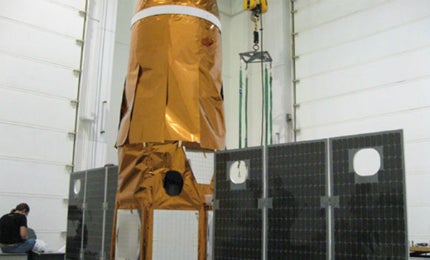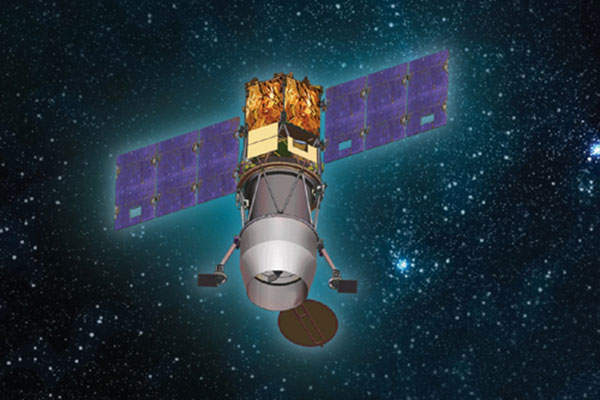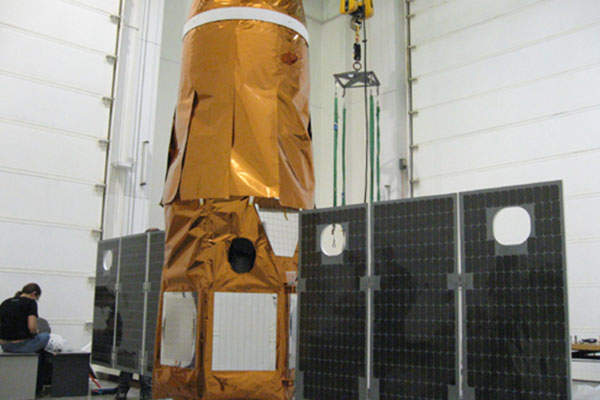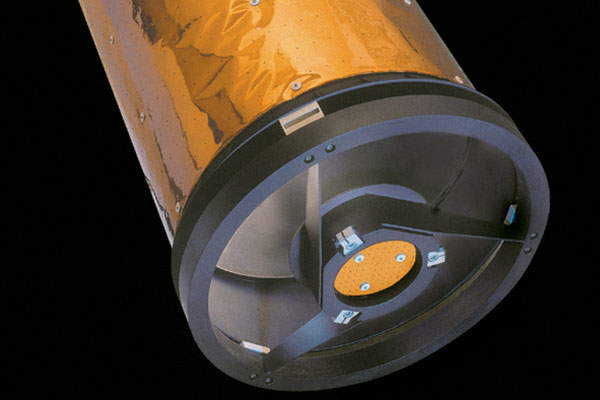
OPTSAT 3000 (optical satellite) is a new-generation, high-resolution Earth observation satellite being built by Israel Aerospace Industries (IAI) / MBT Space Division in collaboration with Telespazio to support the Italian Armed Forces.
The Italian military satellite was unveiled at the Paris Air Show in June 2007. It is scheduled for launch by Arianespace’s Vega launcher from the Guiana Space Center in early 2016. It will be placed in a sun-synchronous orbit at an altitude of 600km. It will have a mission life of more than six years.
OPTSAT 3000 is the follow on programme to the lightweight, high-agile Ofeq observation satellites series, which is also built by IAI / MBT Space Division.
OPTSAT 3000 development and contractors involved
Paz is a new military earth radar observation satellite, designed and built by Airbus Defence and Space to meet security and defence requirements of the Spanish Government. The satellite is owned and operated by Hisdesat.
The Italian Ministry of Defence placed a contract with Telespazio, a Finmeccanica/Thales Company in July 2012 to provide the satellite system, ground control station, launch and early operation, preparation, and execution of operations. As the prime contractor, Telespazio will also provide logistics support, in-orbit tests and commissioning services. The contract is part of a cooperation agreement between the Italian Ministry of Defence and the Israeli Ministry of Defence.
Telespazio awarded a $182m subcontract to IAI / MBT Space Division in July 2012 for the construction of the OPTSAT 3000 satellite.
Elbit Systems Electro-Optics Elop was awarded a contract worth $40m by IAI in December 2012, to provide the Jupiter advanced space camera and additional services.
Italian firm Compagnia Generale per lo Spazio (CGS) was selected to provide engineering and launch services for the OPTSAT 3000 satellite programme, in January 2014. The company is also responsible to design and manufacture the satellite to launcher interface adapter.
Arianespace was awarded a contract by CGS in February 2014 for the launch of the OPTSAT 3000 satellite aboard Vega launcher.
Design and features of OPT
OPTSAT 3000 is equipped with two deployable fixed solar arrays and batteries for power generation. It will have a weight of approximately 400kg at launch.
Payloads attached to OPTSAT 3000 satellite
The panchromatic / multi-spectral JUPITER remote sensing camera system is designed to capture high-resolution, detailed imagery and an accurate mapping of the Earth. It has large field of view and can also create high-quality optical pan-sharpened images.
An on-board recorder stores the images captured by the cameras. The imagery can be transmitted to the ground segment in real time. The satellite is also integrated with a star tracker and a downlink antenna.
Ground segment of the Earth observation satellite
The OPTSAT 3000 Earth observation satellite can be tracked and operated by a single ground control station. The ground segment receives and processes the optical imagery and satellite information, and sends commands to the satellite to ensure efficient operation.
Details of Vega launch vehicle
The Vega launch vehicle, operated by Arianespace, has four stages. It is 29.9m long, 3.025m in diameter and 30m high, and has a lift-off mass of 137t. It can carry payloads of approximately 1,500kg to a 700km circular orbit.
The vehicle’s first stage, featuring a novel filament-wound casing, uses the P80 advanced solid propellant motor. The second and third stages are also powered by solid propellant motors. The upper stage is made of bi-propellant liquid motor.











